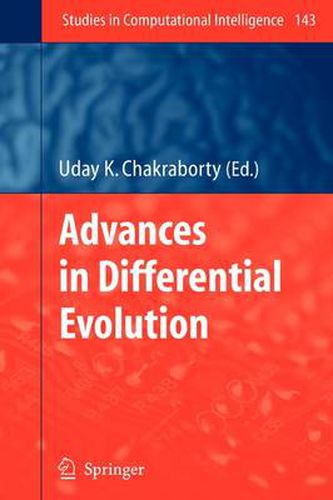Readings Newsletter
Become a Readings Member to make your shopping experience even easier.
Sign in or sign up for free!
You’re not far away from qualifying for FREE standard shipping within Australia
You’ve qualified for FREE standard shipping within Australia
The cart is loading…






This title is printed to order. This book may have been self-published. If so, we cannot guarantee the quality of the content. In the main most books will have gone through the editing process however some may not. We therefore suggest that you be aware of this before ordering this book. If in doubt check either the author or publisher’s details as we are unable to accept any returns unless they are faulty. Please contact us if you have any questions.
Differential evolution is arguably one of the hottest topics in today’s computational intelligence research. This book seeks to present a comprehensive study of the state of the art in this technology and also directions for future research.
The fourteen chapters of this book have been written by leading experts in the area. The first seven chapters focus on algorithm design, while the last seven describe real-world applications. Chapter 1 introduces the basic differential evolution (DE) algorithm and presents a broad overview of the field. Chapter 2 presents a new, rotationally invariant DE algorithm. The role of self-adaptive control parameters in DE is investigated in Chapter 3. Chapters 4 and 5 address constrained optimization; the former develops suitable stopping conditions for the DE run, and the latter presents an improved DE algorithm for problems with very small feasible regions. A novel DE algorithm, based on the concept of opposite points, is the topic of Chapter 6. Chapter 7 provides a survey of multi-objective differential evolution algorithms. A review of the major application areas of differential evolution is presented in Chapter 8. Chapter 9 discusses the application of differential evolution in two important areas of applied electromagnetics. Chapters 10 and 11 focus on applications of hybrid DE algorithms to problems in power system optimization. Chapter 12 applies the DE algorithm to computer chess. The use of DE to solve a problem in bioprocess engineering is discussed in Chapter 13. Chapter 14 describes the application of hybrid differential evolution to a problem in control engineering.
$9.00 standard shipping within Australia
FREE standard shipping within Australia for orders over $100.00
Express & International shipping calculated at checkout
This title is printed to order. This book may have been self-published. If so, we cannot guarantee the quality of the content. In the main most books will have gone through the editing process however some may not. We therefore suggest that you be aware of this before ordering this book. If in doubt check either the author or publisher’s details as we are unable to accept any returns unless they are faulty. Please contact us if you have any questions.
Differential evolution is arguably one of the hottest topics in today’s computational intelligence research. This book seeks to present a comprehensive study of the state of the art in this technology and also directions for future research.
The fourteen chapters of this book have been written by leading experts in the area. The first seven chapters focus on algorithm design, while the last seven describe real-world applications. Chapter 1 introduces the basic differential evolution (DE) algorithm and presents a broad overview of the field. Chapter 2 presents a new, rotationally invariant DE algorithm. The role of self-adaptive control parameters in DE is investigated in Chapter 3. Chapters 4 and 5 address constrained optimization; the former develops suitable stopping conditions for the DE run, and the latter presents an improved DE algorithm for problems with very small feasible regions. A novel DE algorithm, based on the concept of opposite points, is the topic of Chapter 6. Chapter 7 provides a survey of multi-objective differential evolution algorithms. A review of the major application areas of differential evolution is presented in Chapter 8. Chapter 9 discusses the application of differential evolution in two important areas of applied electromagnetics. Chapters 10 and 11 focus on applications of hybrid DE algorithms to problems in power system optimization. Chapter 12 applies the DE algorithm to computer chess. The use of DE to solve a problem in bioprocess engineering is discussed in Chapter 13. Chapter 14 describes the application of hybrid differential evolution to a problem in control engineering.